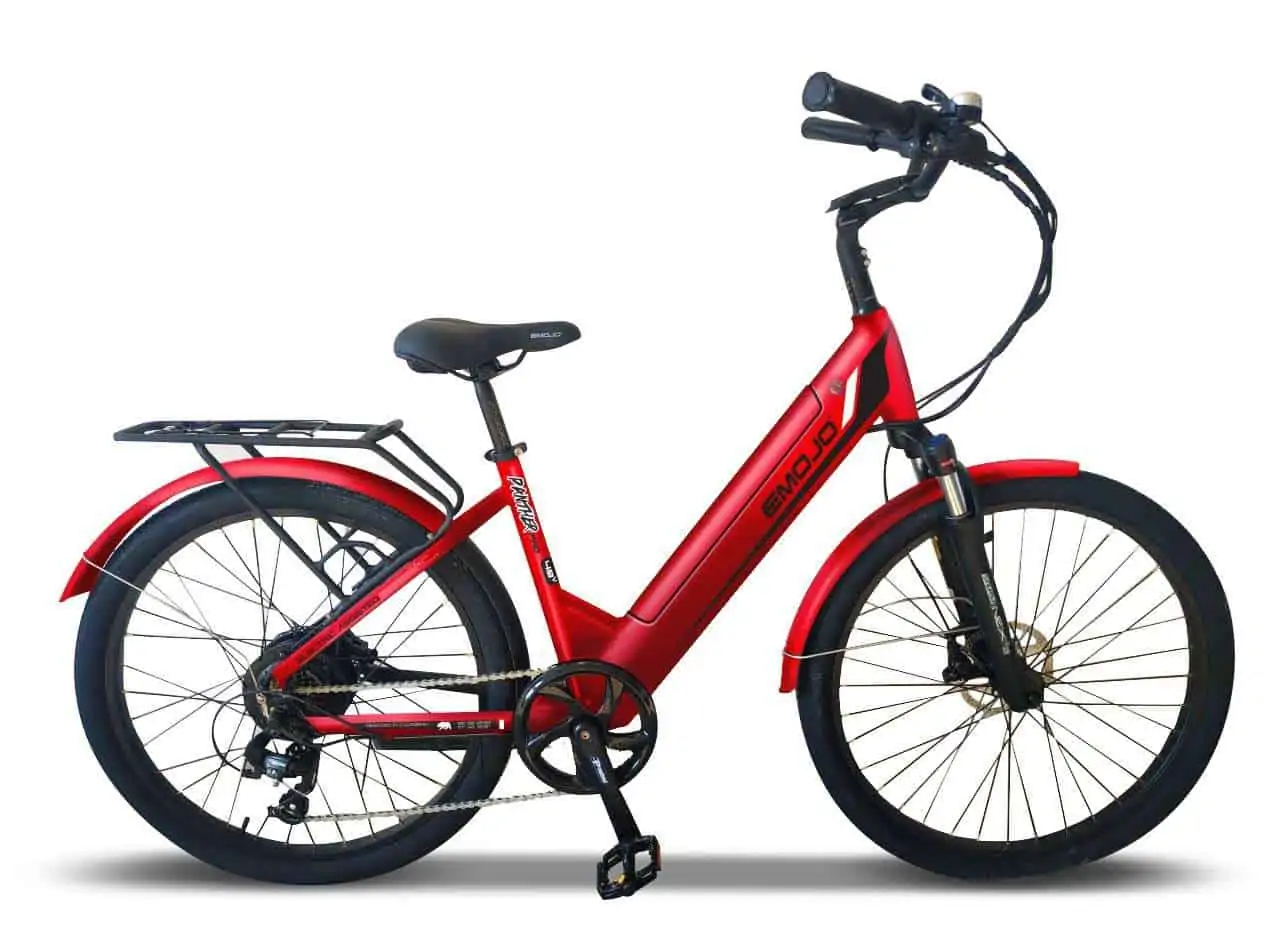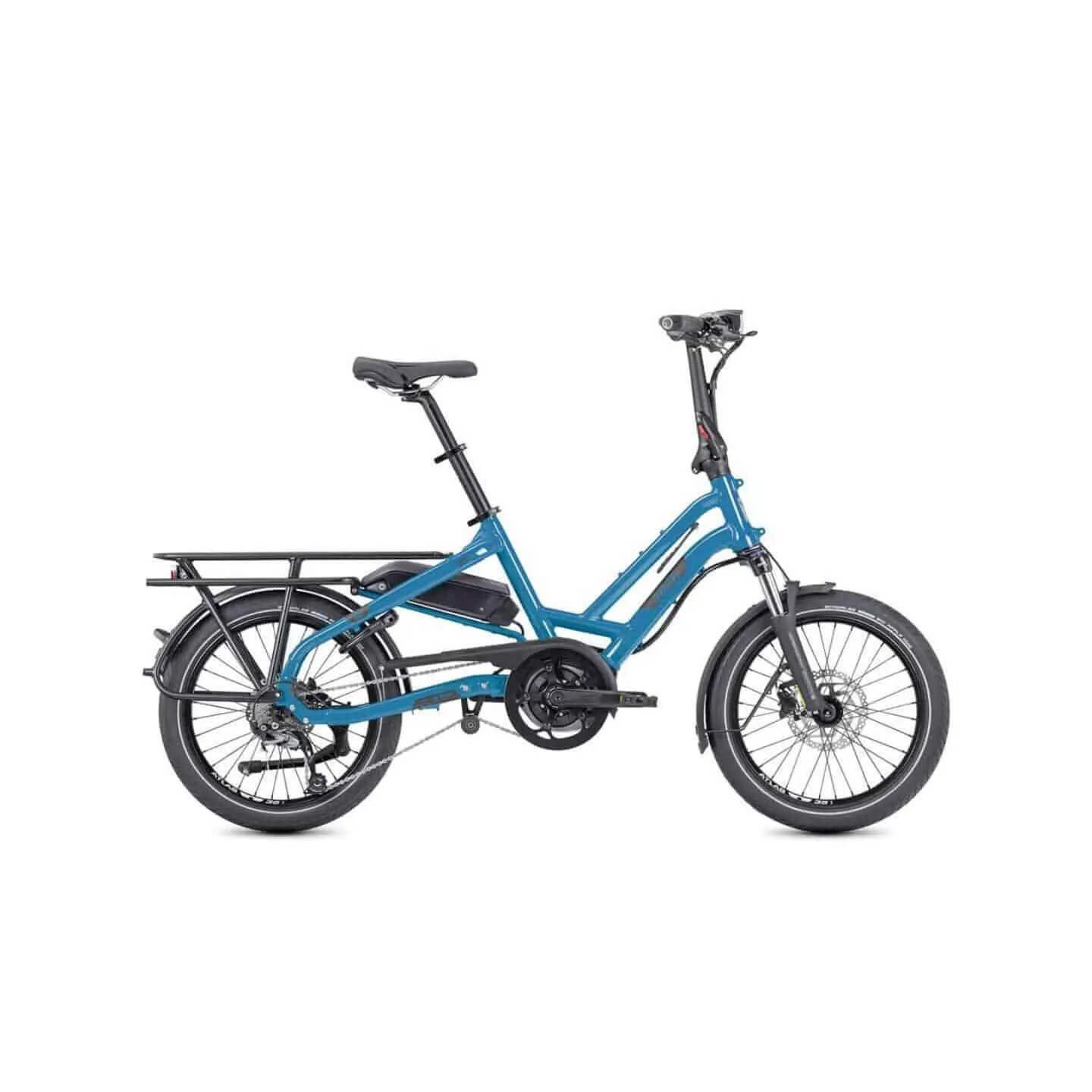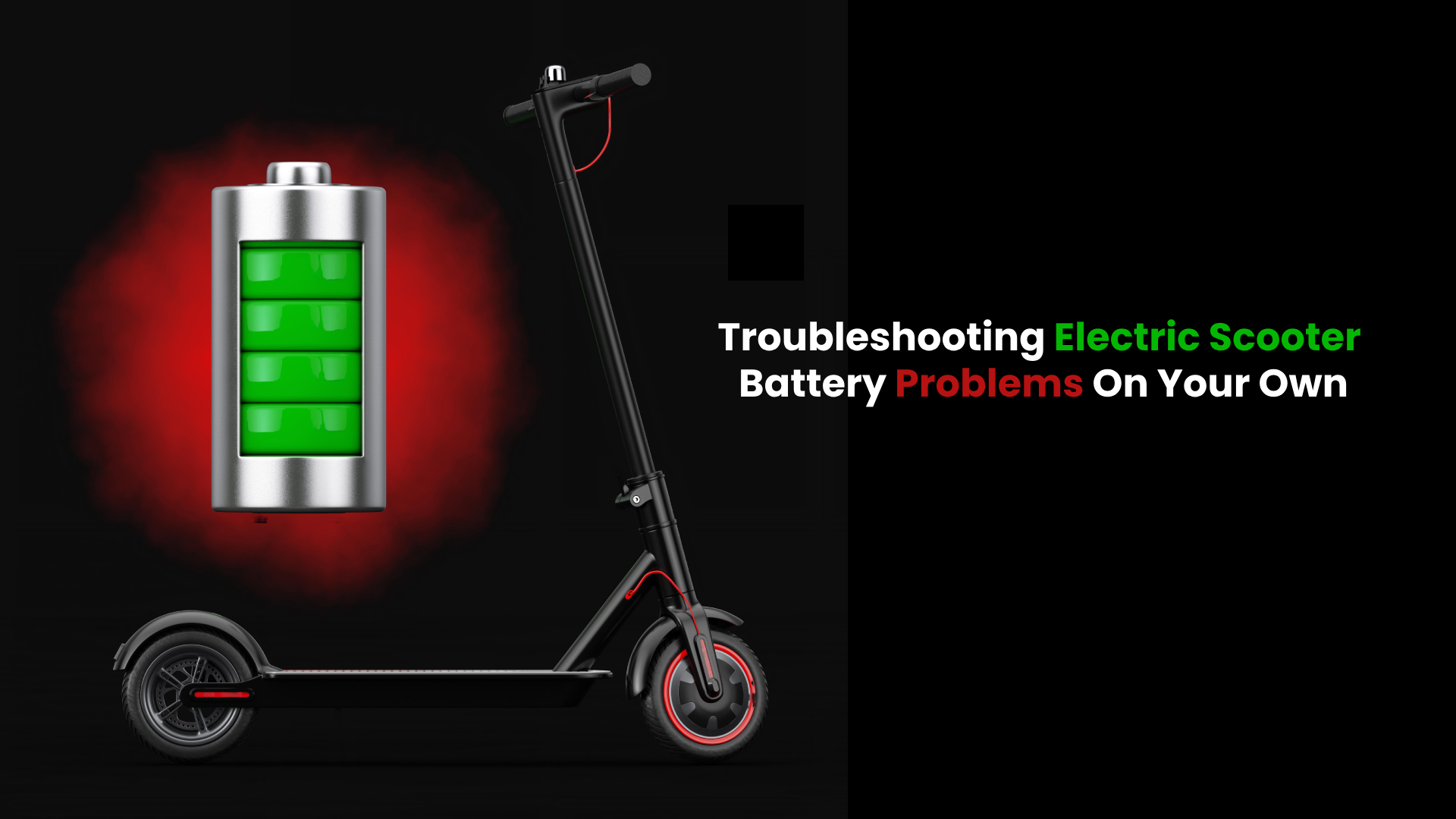Riders weight and electric bikes weight have always been a hotly debated topic among bicycle enthusiasts: Does it really matter? Does the rider weight affect the performance and longevity of an e bike? While it’s a known fact that an electric bike total payload affects its speed and overall performance, one thing riders (especially heavier riders) are unclear on is the effect their weights have on an ebike in the long run. This in-depth article explains what are electric bikes weight limits and how knowing an ebike’s maximum load capacity can help cyclists choose the best bikes for their needs.
Is there a weight limit for electric bikes? and how much weight can an e bike carry?
Yes, most electric bikes weight capacity is anywhere between 220 and 300 pounds.
However, some specialized e-bike models, such as the cargo e-bike, could carry more weight, reaching up to 350 pounds.
At the same time, other models, such as the fold-able e-bikes, are designed to carry relatively lesser weight. Either way, the maximum weight limit of an electric bike varies greatly depending on the type of bike.
“Normally, the maximum weight limit includes the weight of the rider and the cargo weight. It shouldn’t be confused with the total weight limit, which includes the weight limit plus the weight of the bike”
There is no distinct weight classification on e-bikes (or conventional bicycles). You’re either riding a mid-performance e-bike (like a cruise e-bike) or a high-performance e-bike (like a mountain ebike or fat tire ebike).
So, what’s a good weight for an e-bike?
As a general rule, 45lbs sounds like a good weight to look out for. However, this depends on the “type” of electric bike and the purpose for which it was designed.
For instance, road e-bikes are generally classified as speed bikes and could weigh as low as 30lbs (14kg)
If you’re going for a mid-performance electric bike, 35-45lbs sounds like a good place to start.
Higher performance electric bikes typically weigh between 50 and 70lbs mainly because they are usually equipped with heavier and more powerful motors, bigger batteries and also not to forget the other added components to justify their higher price tag.
A lighter ebike might not go as fast or as far but it’ll be easier to carry upstairs or in public transportation. If you’re looking to know more about the typical weight of various types of ebikes and you need guidance for which ebike to go for from a weight perspective, then this blog post is for you.
![Electric Bikes[Comprehensive Buying Guide] Electric Bikes[Comprehensive Buying Guide]](https://www.electricridelab.com/wp-content/uploads/2020/08/qwic-rd11-electric-bike-1_480x480.webp)
Learn More:
Electric Bikes [Comprehensive Buying Guide]
Why the Electric Bikes Weight Capacity is Important?
There’re several reasons why you should consider the maximum weight capacity of an electric bike before making a purchase.
Safety
Generally, the braking system plays an integral role in the riding safety of an electric bike because it helps you slow down or even come to a sudden halt to avoid a collision.
In most cases, inspections and maintenance help with this, but the designed maximum load or weight limit on an electric bike ensures it performs as expected.
For starters, excess weight easily wears down and damages the braking system, putting you at risk.
The weight limit of an electric bike is also related to the strength of a bike’s components. For instance, excess weight can result in the bending of rims, breaking of spokes, and damaged saddles and handlebars.
Also Read:
Electric Dirt Bike Guide – Everything You Need to Know
Performance
The electronics and gears, or rather your e-bike componentry are designed to offer the best riding experience under a certain weight.
Now, if the bike is overloaded, it’s likely to affect the performance, including the average range and speed.
The performance isn’t just affected when you’ve overloaded your e-bike but also when using your electric bike for towing a trailer. Basically, the range and speed value of the e-bike is affected when you exert an extra burden.
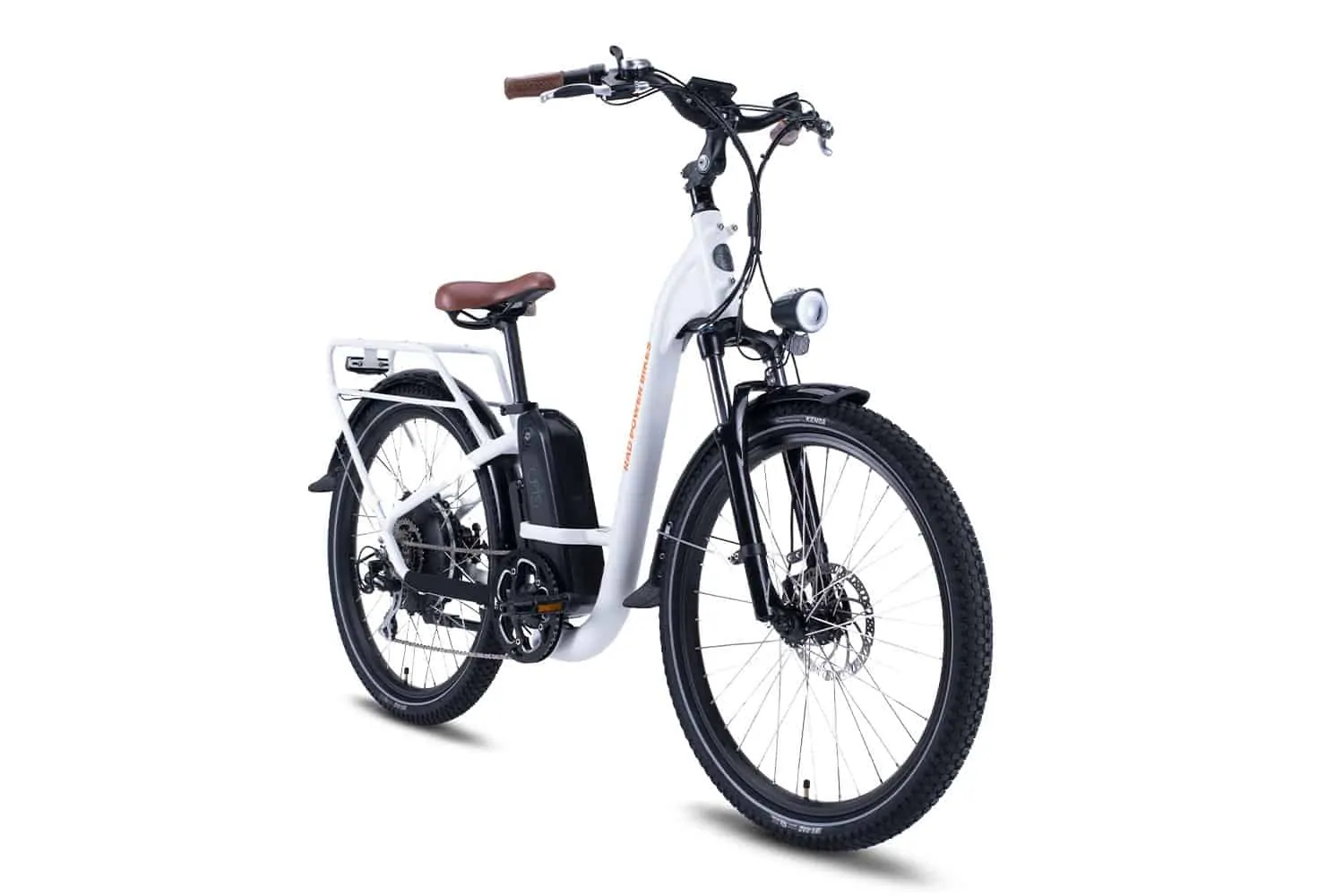
What the Law Says About Electric Bikes Weight Limit
There’re no legally prescribed weight limits for an e-bike.
However, it’s a common practice among manufacturers to indicate the total permissible payload and the e-bike’s empty weight on the manual.
Though the prescribed weight limits are helpful, in practice, these limits are conservatively rated, while others are overstated.
Either way, only use the prescribed weight limit as a guide; only load your e-bike with a weight you feel comfortable with and one you’re confident you will have complete control over.
Also Read:
E-bike 500w vs. 1000w: The Battle of the Motors
Weight Limits and E-bike Selection (Electric Bikes weight capacity for bikes)
E-bikes are available in different sizes, design and feature different weight capacities.
Some of them have similar weight capacities to the traditional bikes, but they’ve the added advantage of convenience and a pedal-assisted ride.
That said, we’ve collected the top 15 popular electrical bikes in the market, accompanied by their weight limit, and we hope you’ll find a model suiting your weight capacity needs.
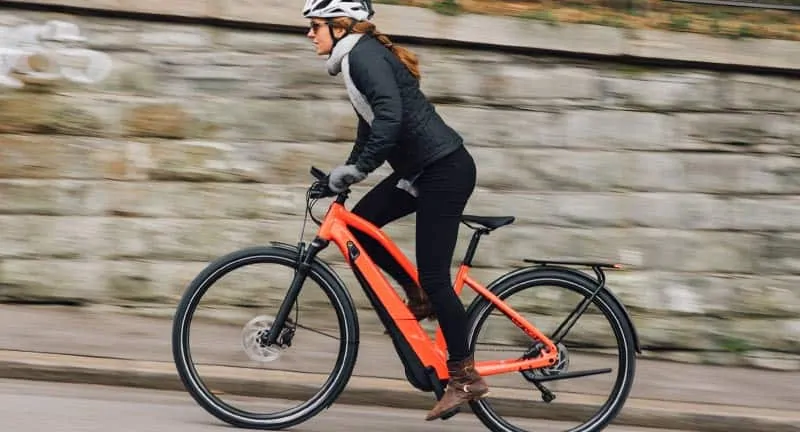
|
Electric Bike Model |
Rider’s Weight Capacity |
|---|---|
|
500 SERIES MTB |
275 lbs |
|
RadRover 5 |
275 lbs |
|
Verve+ 2 |
300 lbs |
|
ANCHEER 500W/250W |
330 lbs |
|
Kemanner 26 inch Electric Mountain Bike |
330 lbs |
|
NAKTO 26″ 250W |
300Lbs |
|
RadCity 4 |
275 lb |
|
RadMini Step-Thru 2 |
275 lbs |
|
RadWagon 4 |
350 lb |
|
RadRunner 1 |
300 lbs |

Also Read:
Why are Electric Bikes so Expensive? Worth the Money? [Comprehensive Buying Guide]
Are Electric Bikes Heavy? Why the Electric Bikes Weight Matter?
Weight affects the performance and usefulness of an e-bike in several ways. For instance, weight can affect the speed, distance, and movability.
The weight of an e-bike depends on several factors, such as motor size, battery size, type, and material construction.
That said, most of them have net weight between 38 to 70 pounds.
This is a far cry from the conventional bikes, which weigh 17-30 pounds..
To give you an idea of the weight of the electric bike, we’ve compiled a list of some of the most popular e-bikes, alongside their respective net weight.
Electric Bike Net Weight Comparison
|
Electric Bike Model |
Weight (pounds) |
|
500 SERIES MTB |
53 lbs |
|
RadRover 5 |
69 lbs |
|
Verve+ 2 |
51.5 lbs |
|
ANCHEER 500W/250W |
50 lbs |
|
Kemanner 26 inch Electric Mountain Bike |
37.4 lbs |
|
NAKTO 26″ 250W |
50 lbs |
|
RadCity 4 |
64 lb |
|
RadMini Step-Thru 2 |
69 lbs |
|
RadWagon 4 |
76.7 lb |
|
RadRunner 1 |
65 lbs |
Also Read:
How Fast Do Electric Bikes Go
Factors Affecting Weight of and E-Bike
E-bike are heavier than conventional bikes.
What makes them heavier is the addition of extra components, particularly the motor and the battery.
Most of the electric bikes also include additional accessories such as an LCD, allowing you to monitor and control the performance of the motor and battery.
Something else affecting the weight is the size of the tires; generally, e-bikes have wider tires than the ordinary bikes, save for the MTB and fat bikes. While the wider tires promote traction, they increase the drag, which makes it harder to pedal and increase the overall weight.
Nonetheless, the addition of the motor and the battery is the biggest contributor to the overall weight of the electric bike.
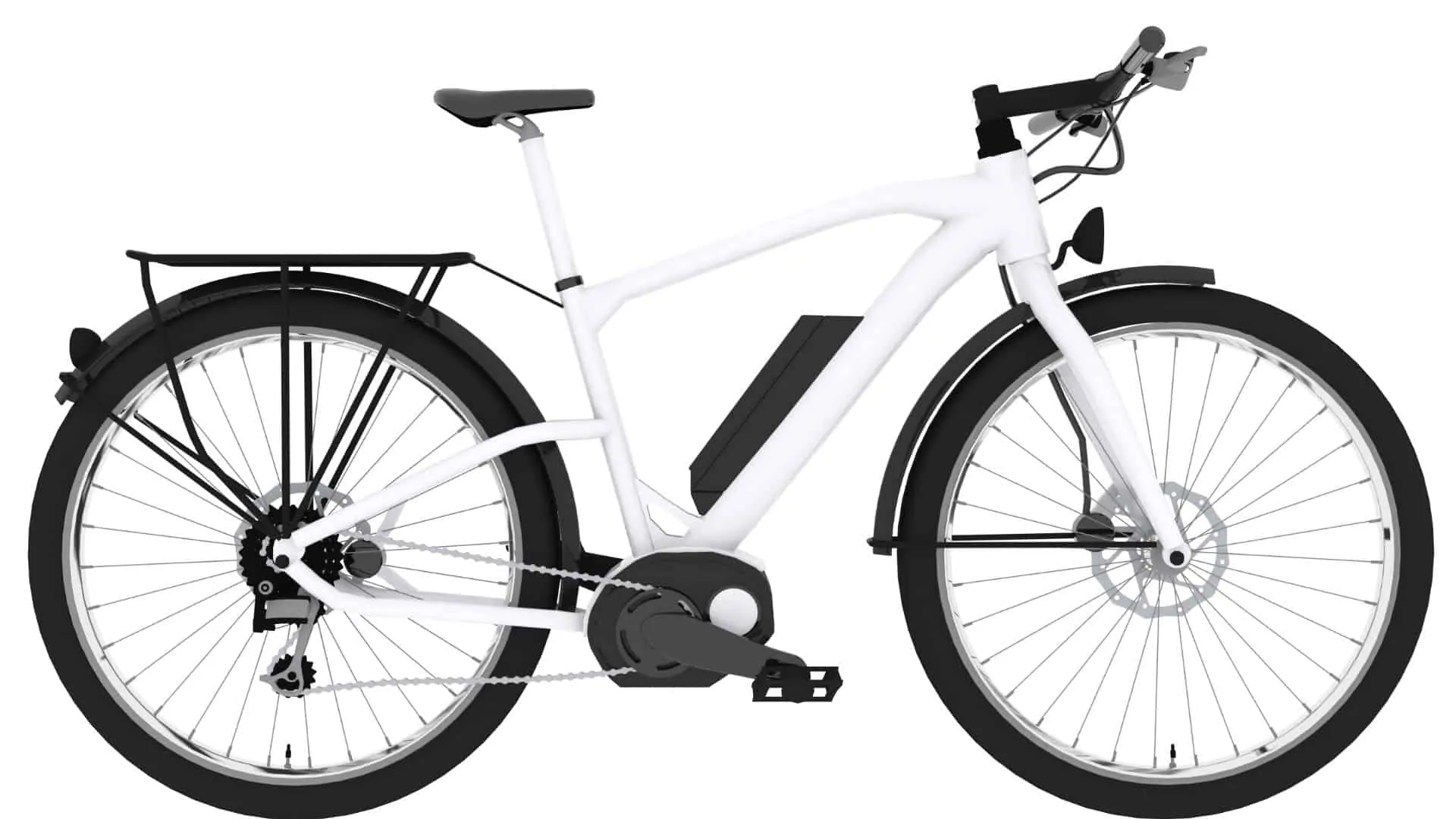

How Do the Electric Bikes Weight Affect Your Performance?
Yes and No.
Weight of an e-bike impacts performance in a few specific contexts.
Generally, if this concerns a conventional bike, the lighter, the better; of course, a lighter bike translates to better handling, ease of use, and movability.
Does that mean lighter e-bikes are faster and easy to use?
Well, e-bikes are different, especially in their design.
Remember, the battery and the motor contribute to a significant portion of the weight, so if you need to make your e-bike light, it means you have to make the battery smaller.
By reducing the battery size and weight, it means you’ve to sacrifice on their capacity, which translates to less range and speed.
Of course, with the growing technology, some battery manufacturers are producing lightweight and compact batteries that can still go very far. However, we still have a long way to go in battery technology.
Secondly, e-bikes aren’t always about speed; their main appeal is the ability to reach a destination with the least fuss and without getting fatigued.
Of course, if you’re doing some serious climbing, an e-bike is faster than the traditional bike.
Also Read:
Electric Bike Battery Charging FAQ
When Does the Electric Bikes Weight Matter?
Besides performance, the weight of e-bike matters when it comes to portability.
If you need to hoist or carry your bike for storage, then you might consider a lightweight option.
Can you get an electric bike that is still considered a lightweight?
Fortunately, yes. You can still get a lightweight electric bike that is under 30 pounds.
Expectedly, however, their performance might not match that of the full-fledged e-bikes.
So, are electric bikes too heavy
As a general rule, Electric bikes are heavier than regular bikes but don’t weigh as much as motorcycles and mopeds.
In fact, when you compare the weight of a regular bike with that of an e-bike of the same type, you’ll find that the difference isn’t that huge.
For instance, the average weight of a traditional road bike is 17lbs (8kg). While the average weight of electric bikes sits between 30 and 70lbs, there are lightweight variants that weigh just 6 to 10 pounds more than regular road bicycles.
A good example would be the Ribble Endurance that weighs 18lbs (8kg). If you can carry an 18-pound bicycle up a flight of stairs then you shouldn’t struggle to do the same for an e-bike that weighs just 7lbs more.
In fact, you can completely eliminate any lifting or carrying by purchasing a good e-bike lock and fastening your bike to sturdy bike racks, street lights, etc. Electric bikes allow riders to participate in recreational and/ sporting activities irrespective of fitness or experience level.
Their motorized frames make cycling almost effortless. Even people who have never ridden on bikes before now fancy electric bikes, not just because they’re a lighter, more portable means of transportation, but because they are relatively easier to ride than human-powered bikes.
However, just like all machines, they have one major drawback; their weight. Being motorized versions of normal bicycles, electric bikes tend to weigh more than their standard counterparts.
This is because, unlike conventional bikes, they are equipped with rechargeable batteries and motors. While a bicycle’s weight might play an important role in how convenient it is to move around, e-bikes’ weight doesn’t really affect their performance.
What is the average weight of an electric bike
In general, Most e-bikes weigh between 45lbs and 55lbs (20kg and 25kg). However, it’s worth noting that this weight range is an average for the major types of e-bikes (there are electric bicycles that weigh 100+ pounds)
Road e-bikes for example are designed to move the rider as fast as the motors can propel them. It is for this reason that their frames (mostly made from carbon; a lightweight but durable material) and wheels (more streamlined than usual) are optimized to reduce drag.
Now, on the other hand, expecting cargo bikes that are designed for transporting loads to be as lightweight as road e-bikes is just unrealistic.
Below are some of the major types of electric bikes and their weight ranges.
1) Road e-bikes
As mentioned above, road e-bikes comprise lighter components and therefore weigh less than any other type of battery-powered bicycle. They are adapted to traveling on paved surfaces and can weigh anywhere between 25 to 35lbs (11.3kg to 16kg)
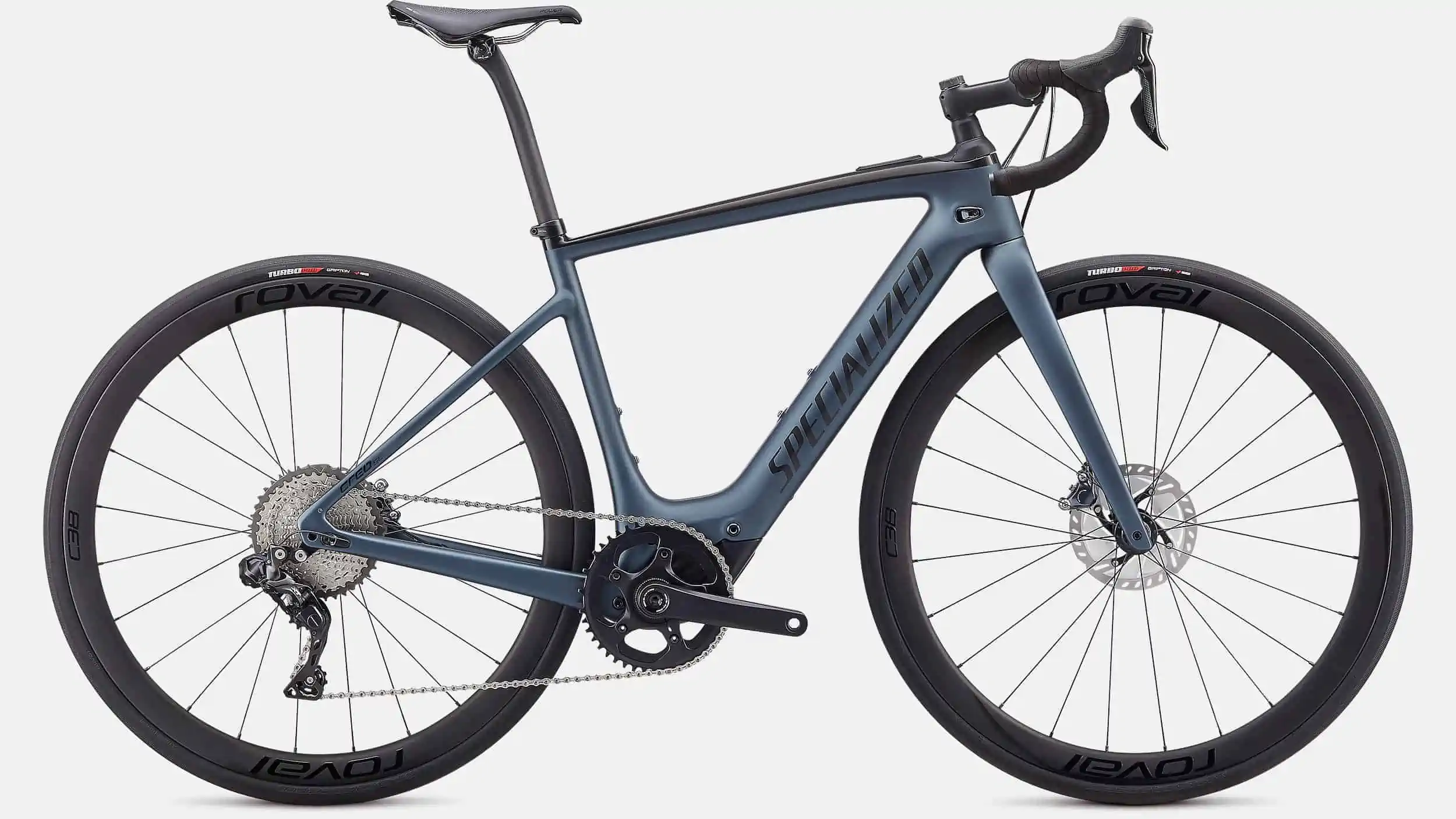
2) Mountain e-bikes
These are heavy-duty bicycles designed to hold out against rough riding conditions. Because they are built for off-road riding, they come with suspension forks and wider tires.
Mountain electric bikes typically weigh anywhere from 50 to 60 lbs (23 – 27kg)
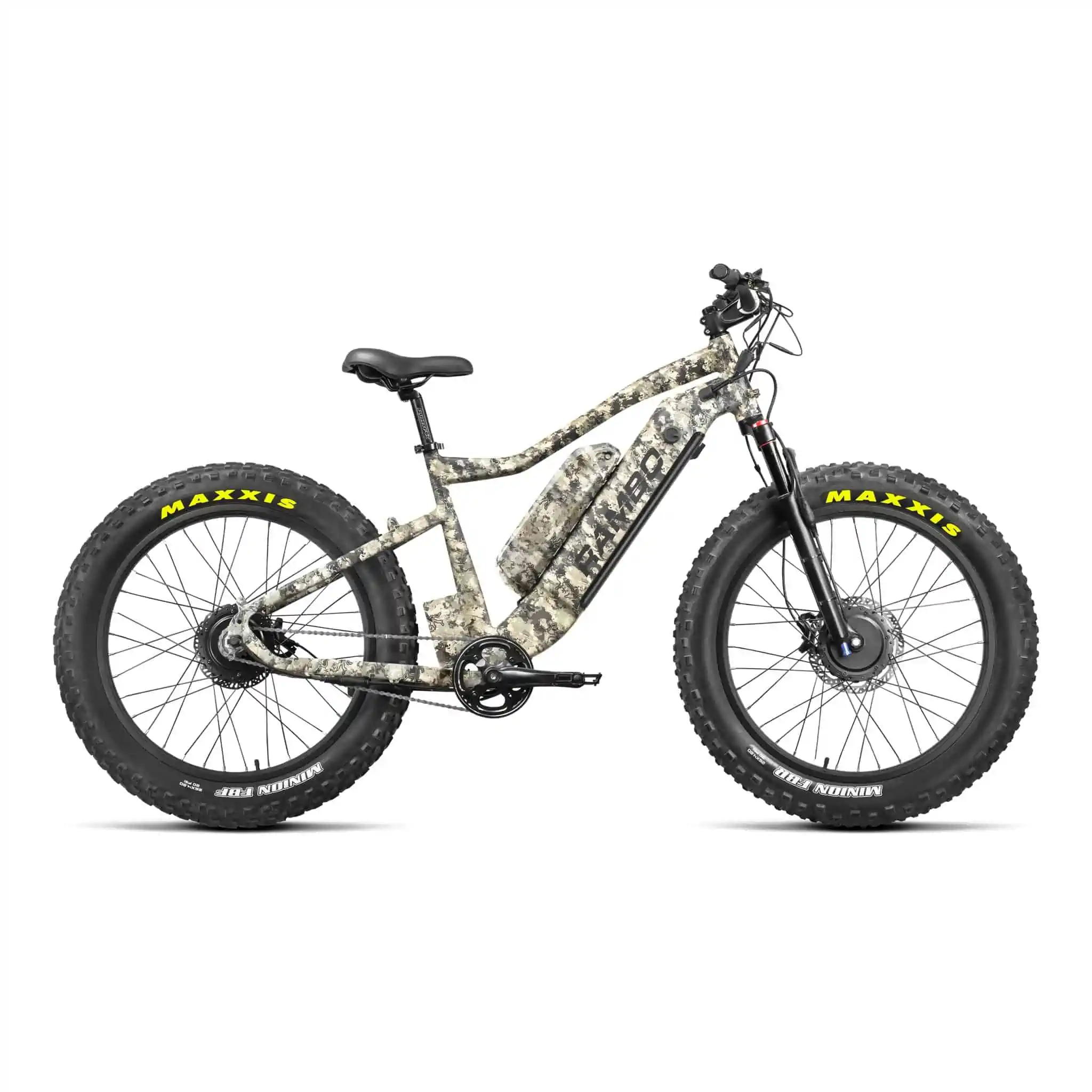
3) Cargo electric bikes
Cargo e-bikes, as their name suggests, are motorized bicycles created to haul heavy items. They usually have boxes or baskets attached to their frames and can support up to 350 lbs (159kg).
For a bicycle that’s considered by many as an alternative to four-wheelers because of its weight-bearing capacity, it’s only natural for these heavy-duty ebikes to weigh 70 -100 lbs (32kg -45kg).
However, a good weight for cargo e-bikes should rest somewhere around 70-80lbs.
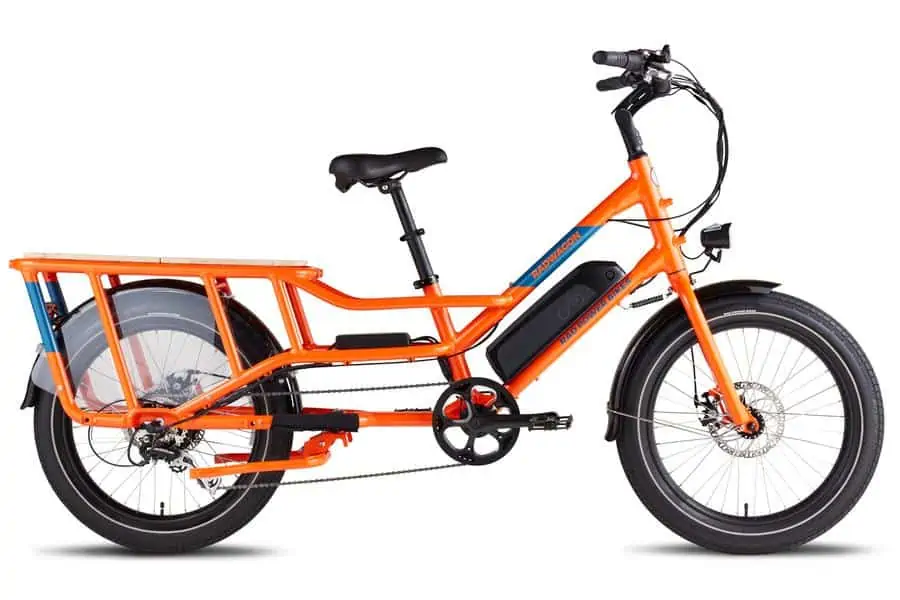
4) Tandem e-bikes
A tandem e-bike’s frame is built to support two or more riders at any given time. Good tandem electric bikes should weigh between 60 and 70 pounds (27 – 32kg)
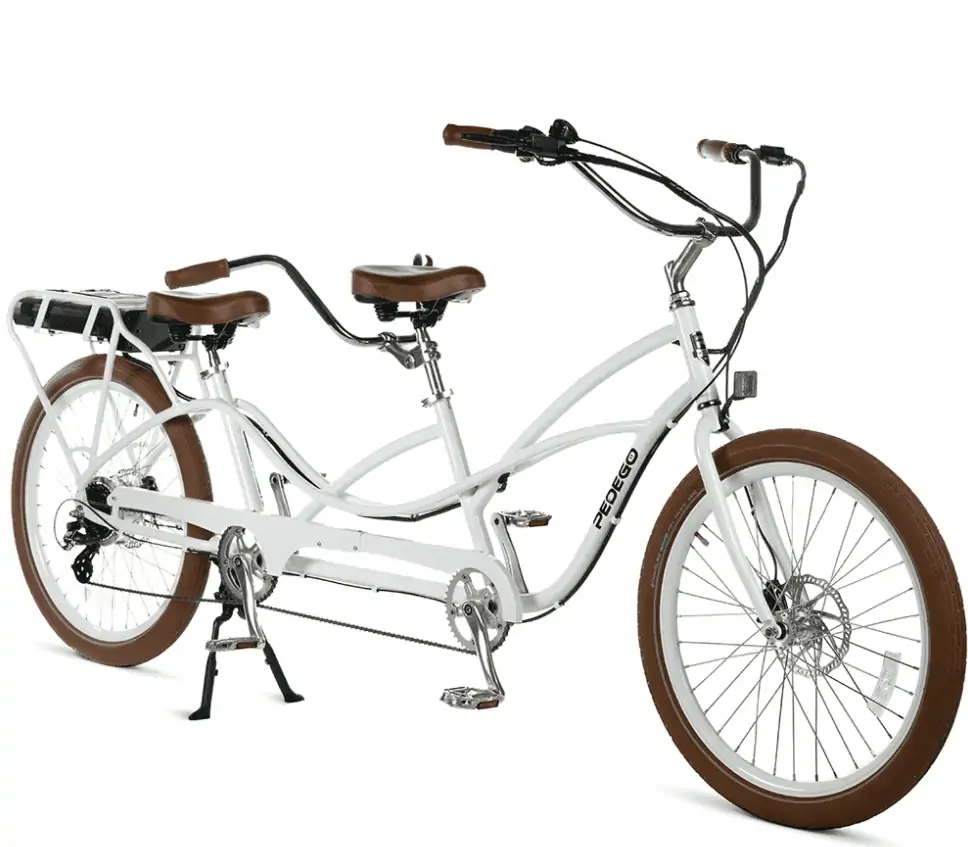
5) Foldable electric bike
People often confuse portability with weightlessness. Just because an electric bike is foldable doesn’t mean it will be lightweight.
However, if you’re someone who considers a 15lbs human-powered bike heavy, then electric bikes might actually be too heavy for you.
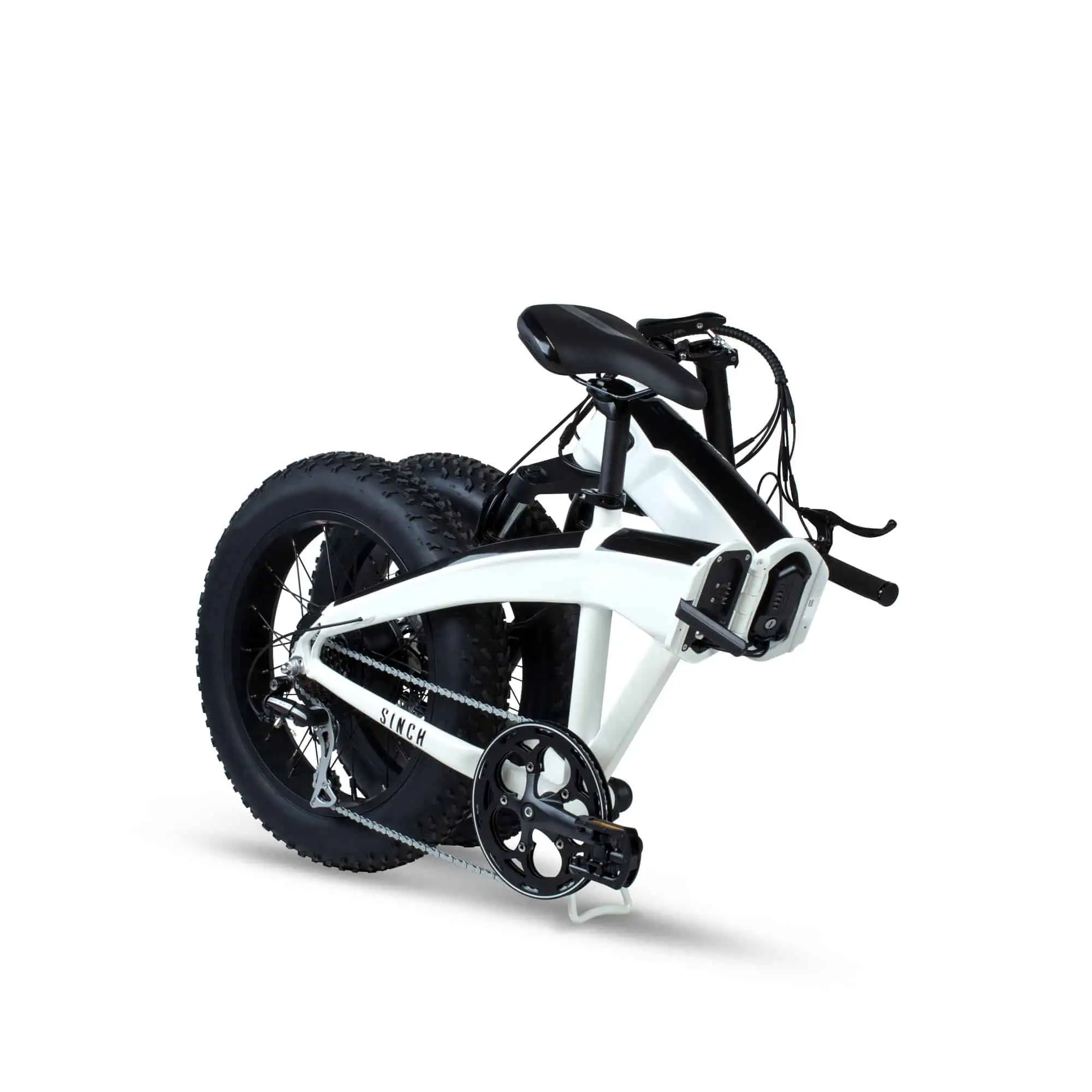
Comparing Various Electric Bikes Weight of an e-bike with that of a normal bicycle.
| Types of bicycles | Average weight of a motorized version (e-bike) | Average weight of the standard version (human-powered) |
| Road bikes | 25 lbs – 35 lbs | 15 lbs – 20 lbs |
| Hybrid bikes | 30 lbs – 50 lbs | 22 lbs – 31 lbs |
| Mountain bikes | 50 lbs – 60 lbs | 25 lbs – 40 lbs |
| Cargo bikes | 65 lbs – 80 lbs | Most cargo bikes are motorized. |
| Tandem bikes | 60 lbs – 70 lbs | 45 lbs – 60 lbs |
| Cruiser bikes | 40 lbs – 50 lbs | 30 lbs – 40 lbs |
| Fat-tire bikes | 50 lbs – 70 lbs | 25 lbs – 40 lbs |
| Foldable bikes | 40 lbs – 50 lbs | 20 lbs – 40 lbs |
| Cyclo-cross bikes | 35 lbs – 45 lbs | 20 lbs – 35 lbs |
How much does an e-bike battery weigh
On average, e-bike battery packs weigh about 5 pounds. However, the weight of the ebike battery very well depends on the amount of charge it can store.
Some electric bike manufacturers want to sell potential customers on their product’s mileage. In such cases, the manufacturer will have to include a battery powerful enough to meet customers’ requirements.
With rechargeable batteries, the heavier they are, the more energy they can store, which also translates into extended mileage. So, for instance, an e-bike with a light battery won’t be able to cover as much distance as one with a heavier battery provided every other factor — like rider weight, head/tailwinds, surface angle, etc. — remains constant.
Finding a light electric bike is not hard at all. You may just be trading performance for the convenience of a lighter ebike.
Do bikes have weight limits
Yes! However, if you were imagining a bike crumbling like a pack of cards upon mounting, well, that’s one sight you might never experience.
Almost every adult bike will hold up an adult – heavy or otherwise. Where weight limits play a huge role is in the performance and longevity of a bike and its components.
Exceeding a bike’s weight limit will put its structural components under more strain than it was designed to handle.
Can you be too heavy to ride a bike
Yes, a rider can be too heavy for a bike. In the case of standard adult bikes, you might not notice immediately that the bike is falling apart under you.
However, with time, as I mentioned earlier, you will find out that your wheel is always having issues. These issues could stem from the rim being worn or the spokes breaking.
While the bike’s frame might still feel rigid, always having to respoke or replace your bike’s wheel will cost you a lot of money over the long haul. That’s why purchasing a heavy-duty bicycle might be a more cost-efficient solution for heavier riders than standard bikes.
Does weight matter when buying a bike
Weight does matter when purchasing a bike. As a rider, your weight will determine how well your new bike will perform and how long it will last.
As a rider, you have to pay extra attention to a bike’s maximum load capacity when looking to purchase one. This is because not all bikes can hold up a heavier rider’s weight without falling apart – and don’t even get me started on how uncomfortable sitting on a bike that’s not optimized for your size will be.
(YouTube video: https://youtu.be/kUsFSbj8d2w)
How much weight can an average bike support
This varies per manufacturer, but most bikes have rated weight limits between 200lbs and 300lbs. Unless, of course, you’re asking if your kid’s — not your teenager, your kid — bike will be able to support your weight…in that case, I’m sure you already know the answer to that.
How strict are bike weight limits
It’s not like the cops are going to stop you for overloading your bike, even if the manufacturer includes the bike’s weight limit in the manual (or website) there’s a high chance the bike can still support up to 10+ pounds (4.5kg) above its limit (this also depends on the bikes structural components).
However, this will mean overworking each of the bike’s parts, especially the wheels. One bump — might be a pothole or a curb — and the force might just be enough to undo your spokes – an event that could land you in the hospital.
What bikes are good for heavy riders
If you’re a heavy rider (say between 300 and 350lbs [136kg – 159kg]), here are a few things you’d want to consider when looking for a bike that’ll be able to support your weight without falling apart.
1) Strong frame material
Carbon frames might look sleek but they’re not always the most sturdy. For heavy riders, we recommend bicycles with frames crafted from aluminum alloy.
Steel is another durable material that will be able to hold 300-400lbs up without crumbling. However, steel bikes are expensive and can be very heavy.
Aluminum on the other hand has a very high strength-to-weight ratio (higher than steel) that’s why it’s used in applications where weight is considered a big deal. This means you can get a hardened aluminum-alloy frame without sacrificing on portability.
2) Higher number of spokes
This might seem trivial, but a wheel with 24+ spokes is less likely to wear quickly than one with less – especially when it’s supporting a heavier payload. This is because the weight is distributed across more spokes, reducing the stress on each spoke.
In a perfect world where riders could tell how strong an object is by just looking at it, the ideal thing would be to look for bikes with strong spokes. However, bike manufacturers don’t exactly include this information in their product specifications so the best way is to find a bike whose wheels have more spokes.

3) Wider rims/wheels
Wheels! It all comes down to the wheels since they practically support and propel the entire payload forward. Wider rims provide more balance, grip, and soak up vibrations from bumps.
Narrower rims/wheels on the other hand don’t do much in shock absorption. Most people buy narrow tires because they think it will make their bikes faster due to less rolling resistance (slim tires are lighter than wider ones).
Well, they’ll be surprised to find that wide tires don’t cause as much drag as they think. In fact, there are real-world tests that prove that wider tires don’t slow a bike down.
Mountain bike weight limit
Mountain bikes are designed to withstand some of the roughest riding conditions. Their frames, wheels, gears, and even brakes are built to survive the strain of climbing up and traveling down steep mountainous terrain.
Most mountain bikes can support between 200 and 300 pounds (90.7kg to 136kg). This is what makes them a suitable choice for heavy riders who are looking to lose weight. They are sturdy enough and usually come with fat tires and suspension forks (since they’re built for off-road biking).
It’s worth noting that there are some cheap mountain bikes out there that are made out of inferior materials. Their frames can only support so much weight before disintegrating.
Make sure you read through any bicycle’s specifications — maybe even call their customer care team — before making a purchase.
Road bike weight limit
Road bikes are generally adapted for urban riding. They are designed to take riders as fast as their legs can manage on paved roads.
For most road bikes, aerodynamics is everything (they are sometimes called race bikes and are used by cyclists & aspiring cyclists). This is why they mostly come with drop bars and why you will hardly find them with fat tires or rims.
Since they’re not built to handle as much strain as MTBs, don’t expect them to be able to hold up as much weight. Most road bikes have a weight limit between 160lbs and 250lbs (73kg – 113.4kg)
Some manufacturers claim that their road bikes can support up to 300lbs maximum. Well, maybe their frames can, I won’t count on their 16-spoke wheels.
Specialized Electric Bikes Weight limit
Specialized has established itself as an innovator in the cycling industry. What started as a bike component maker 47 years ago is now recognized as one of the biggest manufacturers of road and mountain bikes in the U.S and beyond.
They manufacture both road and mountain bikes and pay a lot of attention to their bikes’ details. For their road bikes, they like to design them lighter, sturdier, and more aerodynamic.
The same for their MTBs (mountain biker and downhill overall world champion, Loïc Bruno, is on the Specialized team). Their bikes can support from 160lbs to 300lbs (73kg – 136kg).
| Bike type | Bike weight limit |
| Mountain bike weight limit | Between 200 and 300 pounds (90.7kg to 136kg |
| Road bike weight limit | 160lbs – 250lbs (73kg – 113.4kg) |
| Specialized bike weight limit | 160lbs -300lbs (73kg – 136kg) |
Conclusion
Knowing the electric bikes weight capacity and weight limit of your electric bike is crucial, as it affects the performance and safety of your bike.
Weight limit, for instance, will determine the amount of load your e-bike can carry.
The weight of the bike, on the other hand, affects the overall riding experience of your electric bike.
While weight is a good thing in the e-bike, it’s not always to your benefit- you need to be clear on the purpose of your purchase.
If you need to commute for long-distance, quickly, then benefits exceed the extra weight.
However, if you’ll need to haul your bike several stairs or are simply looking for a bike for short distance runs, the extra weight isn’t worth it.

